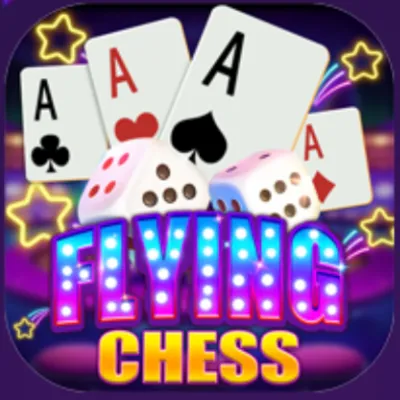Introduction
Flying Chess is a classic board game enjoyed by people of all ages. Also known as Aeroplane Chess, this game is colorful, easy to learn, and fun to play. It combines luck with strategy as players race their planes around the board to reach the center. The game is popular in many countries and is a great choice for family game night. This blog post explains what Flying Chess is, how to play, its rules, tips to win, and some variations to make the game even more exciting.
What is Flying Chess?
Flying Chess is a board game that was invented in China in the early 20th century. It is similar to other games like Ludo and Pachisi but has a unique twist with airplane-themed pieces. Each player controls four small airplane tokens and tries to move them from the starting hangar to the center of the board.
The game became very popular in China and later spread to other countries in Asia and beyond. Its bright design and simple rules make it especially enjoyable for children, but adults can have fun too. It is a perfect game for both learning and entertainment.
Game Equipment
Change block type or style
Move Paragraph block from position 7 up to position 6
Move Paragraph block from position 7 down to position 8
Change text alignment
Displays more block tools
Flying Chess comes with a few key components:
- A square game board with four tracks in red, blue, yellow, and green
- Four airplane pieces per player, each set in a different color
- A single six-sided die
- Hangars or home bases in each corner for each color
Each player picks a color and places their four planes in their hangar. The goal is to be the first to get all four airplanes from the hangar to the center finish point.
How to Play: The Rules
Objective
The goal of Flying Chess is to move all four of your planes from the hangar to the finish area in the center of the board. You must move your pieces along the path that matches your color and reach the final area by an exact die roll.
Starting the Game
Players take turns rolling the die. A player must roll a specific number to launch a plane from the hangar onto the board. The required number may vary depending on the version, but most versions allow launching with a roll of 5 or 6. Some house rules allow launching on any even number.
Moving the Planes
Once a plane is on the board, you move it forward based on the number you roll. The path goes clockwise around the board. If you roll a 6, you get an extra roll. But if you roll three 6s in a row, your last plane that was moved returns to the hangar, and your turn ends.
Jumping and Shortcuts
If a plane lands on its own color, it gets to jump forward four spaces to the next same-color space. If an opponent’s plane is in that path, it is sent back to its hangar.
The board also has shortcut areas, marked with a dotted line. If your plane lands exactly on a shortcut space that matches your color, it can take a special shortcut path to move closer to the center. Other players’ pieces on this path are sent home.
Attacking Opponent Planes
If your plane lands on a space where an opponent’s plane is, the opponent’s plane is sent back to their hangar. This adds fun and challenge to the game. But some spaces are marked as safe zones, and landing on them protects your piece from being sent back.
Stacking Planes
You can land your plane on a space already occupied by your own plane. When this happens, the two planes stack and move together like one. Stacking can help you move faster and protect your planes. But if another player lands on the stacked group, both planes are sent back to the hangar. Use stacking carefully.
Finishing the Game
To win, you must bring all four of your planes into the center base. To enter the finish area, you must roll the exact number. If you roll too high, you have to move backward by the extra steps. The first player to bring all four planes home wins the game. Others can continue to play to determine second and third place.
Why People Enjoy Flying Chess
Flying Chess is enjoyable for many reasons. First, the game is very easy to understand. Even young children can learn the rules after a few minutes. The colorful board and airplane pieces make it visually attractive.
Second, it combines both luck and decision-making. You need luck to roll the right number, but you also need to make smart choices about which plane to move and when to launch a new one. This mix keeps the game exciting and different every time you play.
Third, it is a great way to spend time with family or friends. A game usually takes 30 to 45 minutes, which is perfect for a quick and fun activity. People of all ages can enjoy playing together.
Tips and Strategy
Choose Your Move Wisely
When you roll a number, you may have more than one move option. Decide whether it’s better to move a plane that is already flying or to launch a new one. If your plane is near the center and close to winning, focus on that.
Use Shortcuts and Jumps
Try to land on your own color to take the jump and move faster. Also aim for shortcut spaces when possible. These jumps can make a big difference and help you reach the finish sooner.
Stack When Safe
Stacking planes can help protect them, but only if the space is not easy for your opponent to reach. Do not stack if the next player has a chance to roll the number to attack your stack.
Watch Your Opponent
Pay attention to where other players’ planes are. Try to avoid landing where they can easily attack you on their next turn. You can also block their path by stopping just ahead of their planes.
Take Advantage of Extra Rolls
Rolling a 6 gives you another turn. Use this to your advantage. But be careful if you roll two 6s in a row. A third 6 will send your plane back to the hangar. Know when to take the risk.
Variations and Optional Rules
Many players like to add house rules to change or improve the game. Here are some common variations:
- Use any even number to launch a plane, not just 6 or 5
- Add a rule where stacked planes fight back with a dice roll instead of just being sent home
- Let all players use any color’s shortcut path
- Allow backward movement if it helps you land exactly in the center
These optional rules can make the game more fun or more fair depending on the players’ age or skill level. You can also create your own custom rules as long as all players agree before the game starts.
Conclusion
Flying Chess is a simple and exciting board game that brings people together. It teaches basic counting and planning, while also providing laughter, surprises, and friendly competition. The rules are easy, the design is fun, and every game is different. Whether you’re playing with kids, friends, or grandparents, Flying Chess offers a great way to enjoy time together. If you have never played Flying Chess, now is the perfect time to try. Grab a game board, roll the dice, and get ready to fly your planes to victory.


